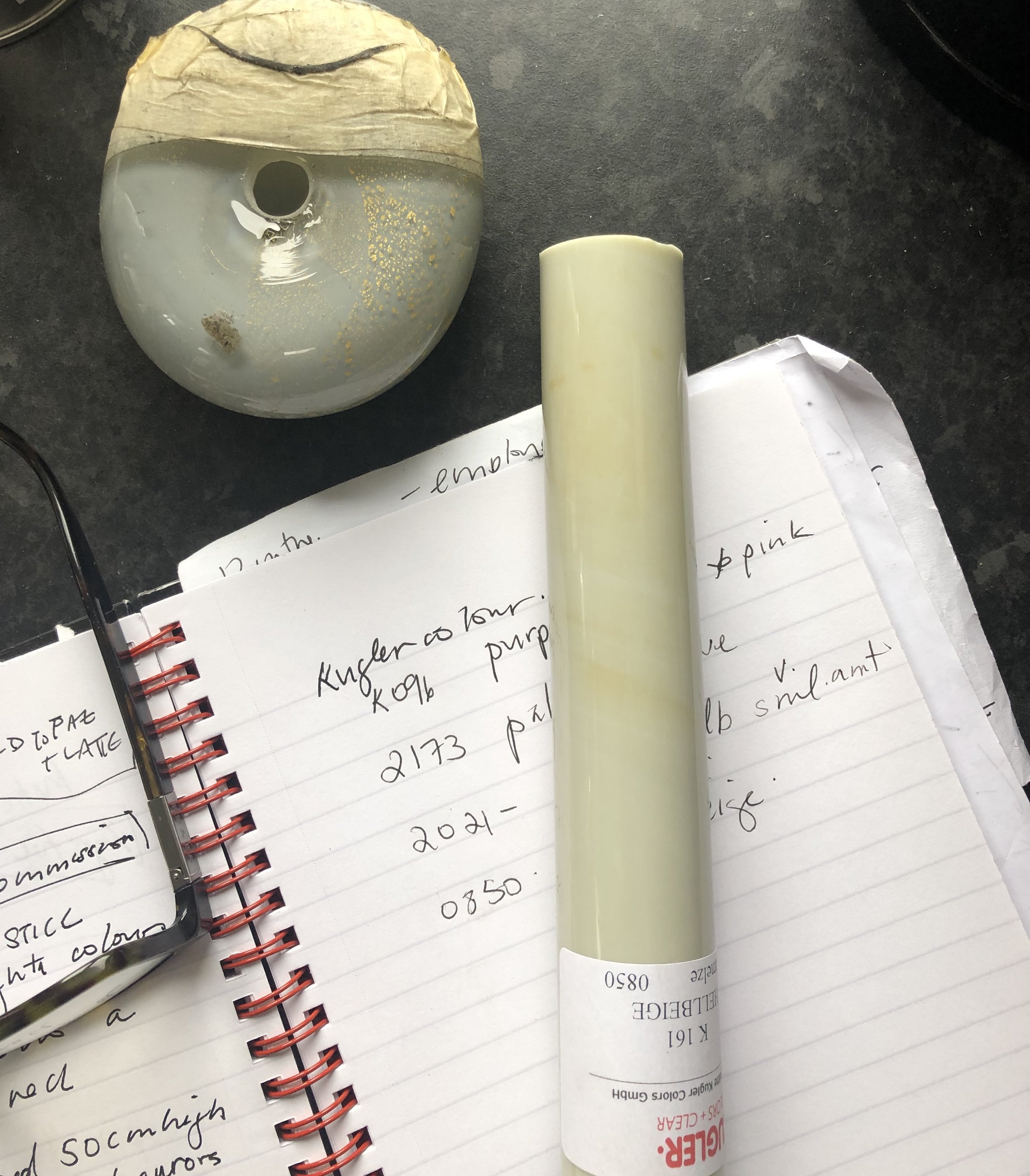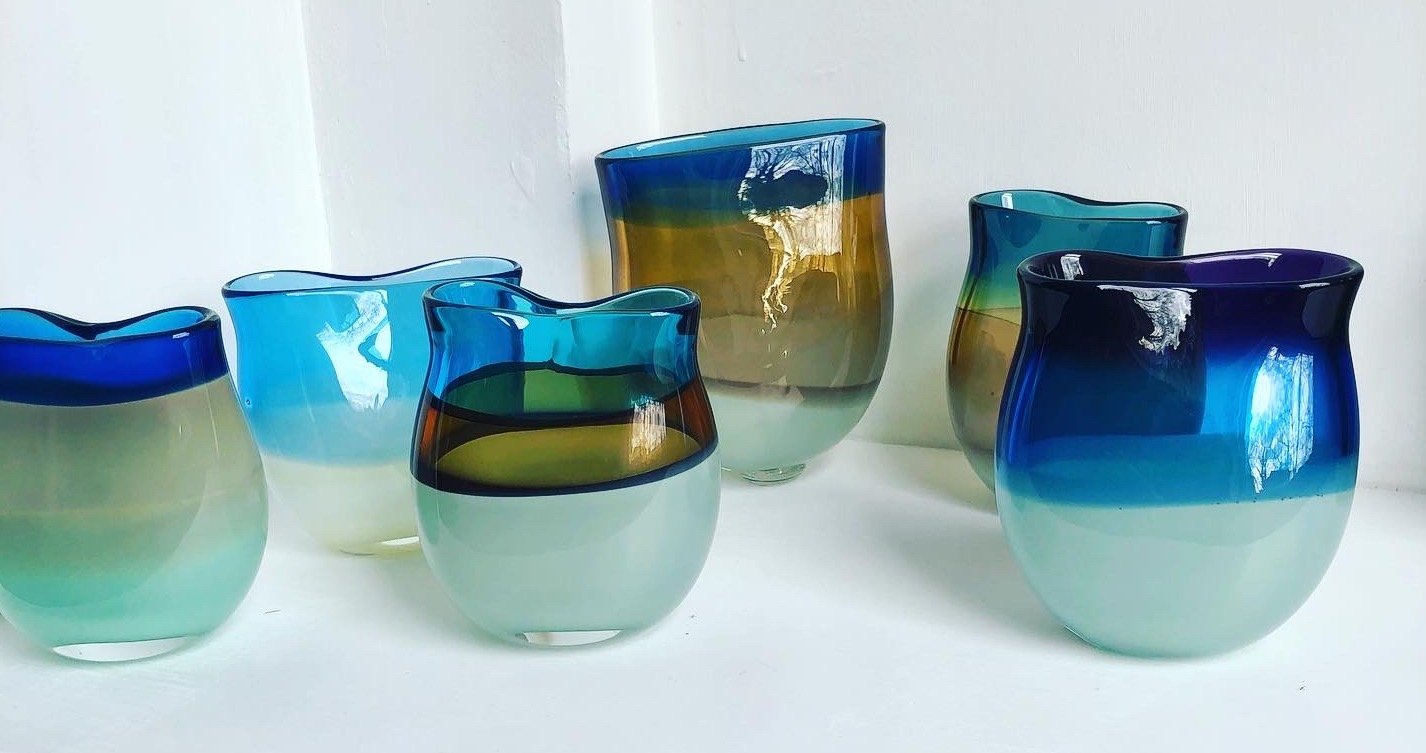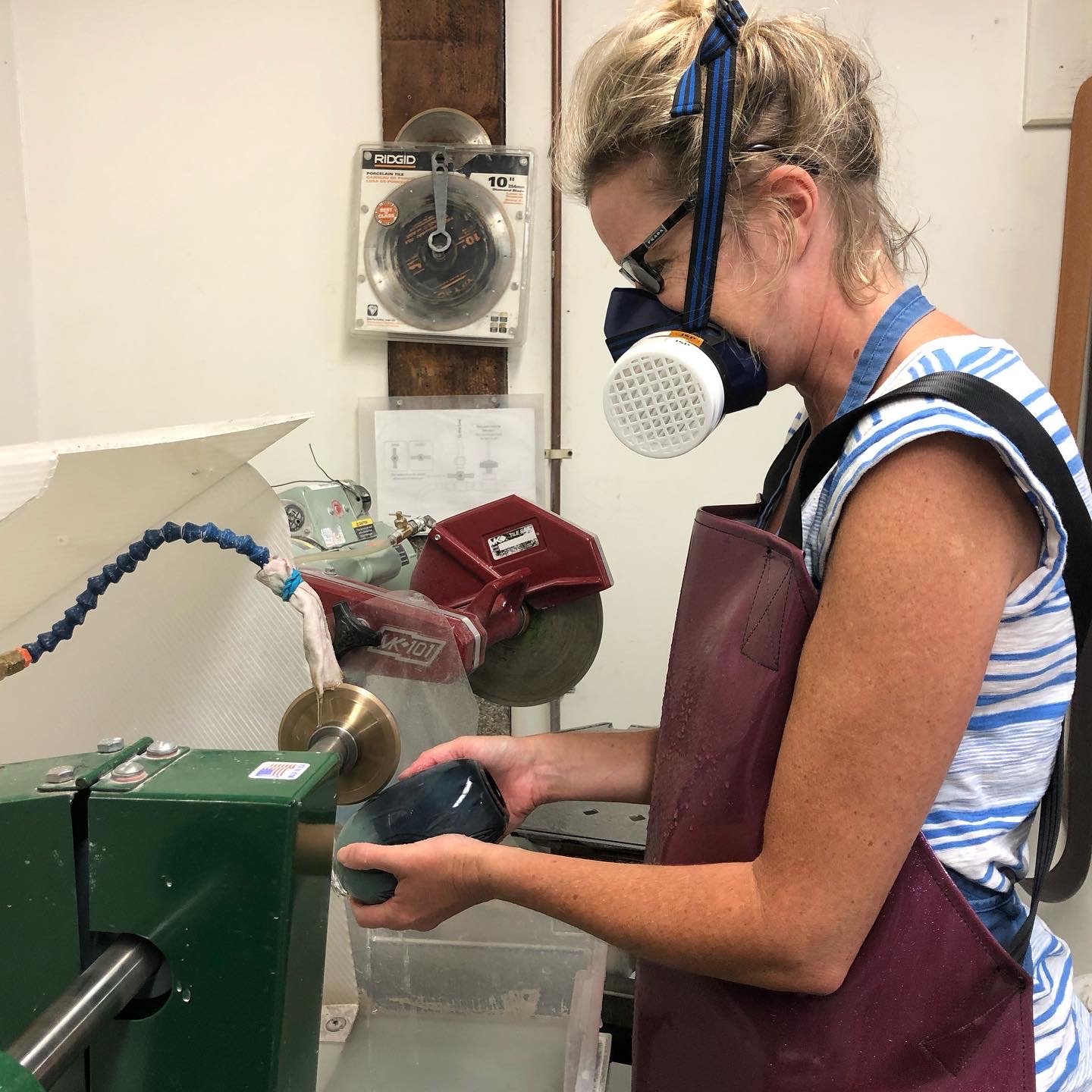Process
A short process film made in collaboration with Jack Webber from Eyes. Ears film.
“As well as telling the story of how Michèle creates her beautiful asymmetrical forms, we wanted to capture the contrast between her studio, where ideas are conceived and the immediacy of the hot-shop where the hot glass is formed and shaped.”
Special thanks to Sonja Klinger for her help & studio.
CHOOSING COLOUR
Unlike other materials where the colour is applied after shape is made and fired, with blown glass one starts with the colour. Colour and form evolve together.
A series of tests are made beforehand to check how the molten colour moves. Glass colour contain metal oxides, each of which reacts differently to heat.
Soft colours move and break up (like cream in soup) while hard colours retain a rigidness often creating an extra element.
The length of heating time and amount of colour used is of particular importance, to how the shape blows out and how the colours react to each other.
The colour comes in glass rods which are cut down and heated in a small kiln.
The idea for a glass work forms in my head for months.
I realize these ideas by sketching and working out the forms in clay before blowing the ideas in glass .
Colour samples are thought out and created weeks ahead of time.
There’s an immediacy to blown glass.
It needs to be worked on quite quickly.
You can’t stop for a tea break midway and reconsider your plans.
Hot glass cools in seconds and can crack if not heated right away, so planning ahead is crucial.
Sketch & Model
Each piece is mouth blown, and shaped by hand while hot.No moulds are used.
Although pieces will be remade there will always be some differences from one vessel to another.
Graal Process
Cutting through colour
During my MA I developed my own technique of working with the classic Swedish technique, GraaI, originally developed by Orrefors of Sweden in 1916.
I draw with diamond engraving wheels cutting patterns through an overlay of coloured glass in the form of an egg.
These blanks are then heated up overnight and reblown into larger forms.
The cut pattern becomes melted in and when blown is integral to the final shape.
My aim is to allow as much light into these pieces by cutting away the opaque coloured glass, making them more fluid, light and permeable.
I find the contained interior space intriguing, by how the inner reflection of light and shadow affects the exterior form, and the effect of light being diffused through line.

















